
Nepenthes spathulata is a tropical pitcher plant native to Java and Sumatra, where it grows at elevations of between 1100 and 2900 m above sea level. The specific epithet spathulata is derived from the Latin word spathulatus, meaning "spatula shaped", and refers to the shape of the lamina.

Nepenthes mirabilis, or the common swamp pitcher-plant and tropical pitcher plant, is a carnivorous plant species. By far the most widespread of all Nepenthes, its range covers continental Southeast Asia and all major islands of the Malay Archipelago, stretching from China in the north to Australia in the south. The species exhibits great variability throughout its range. One of the more notable varieties, N. mirabilis var. echinostoma, is endemic to Borneo and possesses an extremely wide peristome.

Nepenthes klossii is a tropical pitcher plant endemic to New Guinea.

Nepenthes hispida is a tropical pitcher plant species native to Borneo. It grows at elevations of 100 to 800 m in kerangas forest. It is known with certainty only from Lambir Hills National Park and surrounding areas.

Nepenthes alata is a tropical pitcher plant endemic to the Philippines. Like all pitcher plants, it is carnivorous and uses its nectar to attract insects that drown in the pitcher and are digested by the plant. It is highly polymorphic, and its taxonomy continues to be subject to revisions.

Nepenthes lamii is a tropical pitcher plant endemic to New Guinea, where it grows at an altitude of up to 3520 m above sea level, higher than any other Nepenthes species. Although once confused with N. vieillardii and previously regarded as conspecific with the closely related N. monticola, it is now recognised as a distinct species.
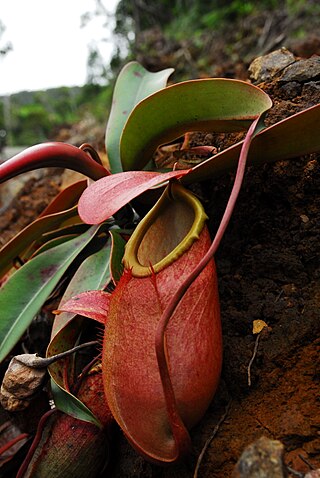
Nepenthes merrilliana is a tropical pitcher plant endemic to the Philippines. It produces some of the largest pitchers in the genus, rivalling those of N. rajah.

Nepenthes sumatrana is a tropical pitcher plant endemic to the Indonesian island of Sumatra, after which it is named.
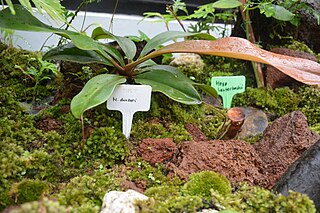
Nepenthes danseri is a species of tropical pitcher plant. It is known only from the northern coast of Waigeo Island; plants from Halmahera, the largest of the Maluku Islands, are now recognised as belonging to a separate species, N. halmahera.

Nepenthes thorelii is a tropical pitcher plant endemic to Indochina. Very little is known about N. thorelii and it is unlikely to have entered cultivation, although various other taxa are often mislabelled as this species in the plant trade. Prior to its rediscovery in 2011, N. thorelii was considered possibly extinct, both in the wild and in cultivation.
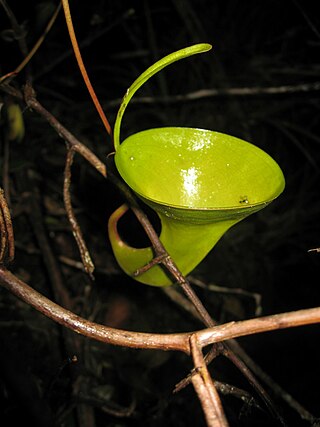
Nepenthes inermis is a tropical pitcher plant endemic to the Indonesian island of Sumatra. The specific epithet inermis is Latin for "unarmed" and refers to the upper pitchers of this species, which are unique in that they completely lack a peristome.

Matthew Hilary Peter Jebb is an Irish botanist and taxonomist specialising in the ant plant genera Squamellaria, Myrmecodia, Hydnophytum, Myrmephytum and Anthorrhiza, as well as the carnivorous plant genus Nepenthes.
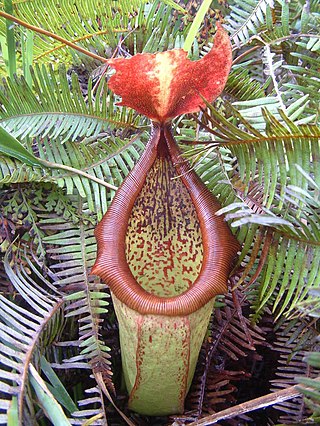
Nepenthes insignis is a tropical pitcher plant endemic to New Guinea and surrounding islands. The specific epithet insignis is Latin for "distinguished" or "remarkable".
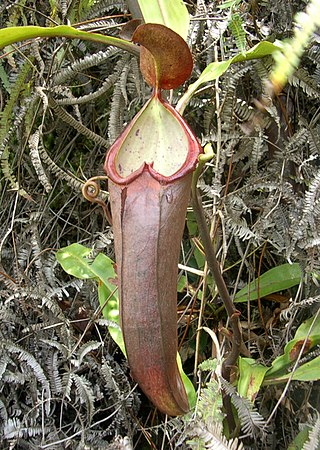
Nepenthes beccariana is a tropical pitcher plant. The species was described in 1908 by John Muirhead Macfarlane based on a specimen collected from the island of Nias, which lies off the western coast of Sumatra. It appears to be closely related to both N. longifolia and N. sumatrana, and the former is possibly a heterotypic synonym of this taxon.

"A skeletal revision of Nepenthes (Nepenthaceae)" is a monograph by Matthew Jebb and Martin Cheek on the tropical pitcher plants of the genus Nepenthes. It was published in the May 1997 issue of the botanical journal Blumea. The work represented the first revision of the entire genus since John Muirhead Macfarlane's 1908 monograph. Jebb and Cheek's revision was based on "collaborative work by both authors since 1984, largely on herbarium specimens, but including fieldwork in New Guinea, Indonesia, Malaysia, Singapore and Madagascar". It was a precursor to their more exhaustive 2001 monograph, "Nepenthaceae".

Nepenthes of Borneo is a monograph by Charles Clarke on the tropical pitcher plants of Borneo. It was first published in 1997 by Natural History Publications (Borneo), and reprinted in 2006. Clarke describes it as "primarily an ecological monograph".
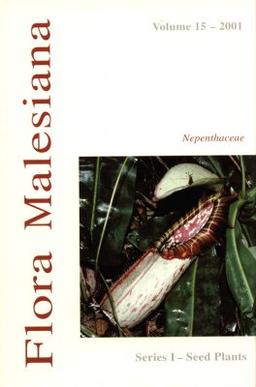
"Nepenthaceae" is a monograph by Martin Cheek and Matthew Jebb on the tropical pitcher plants of Malesia, which encompasses Brunei, Indonesia, Malaysia, Papua New Guinea, the Philippines, and Singapore. It was published in 2001 by the National Herbarium of the Netherlands as the fifteenth volume of the Flora Malesiana series. The species descriptions presented in the monograph are based on the authors' field observations in Borneo, New Guinea, and Peninsular Malaysia, as well as the examination of plant material deposited at 20 herbaria.

Pitcher-Plants of Borneo is a monograph by Anthea Phillipps and Anthony Lamb on the tropical pitcher plants of Borneo. It was first published in 1996 by Natural History Publications (Borneo), in association with the Royal Botanic Gardens, Kew and the Malaysian Nature Society. An updated and much expanded second edition was published in 2008 as Pitcher Plants of Borneo, with Ch'ien Lee as co-author.


















